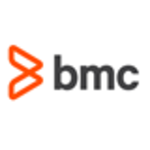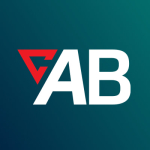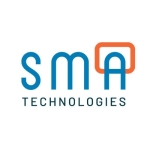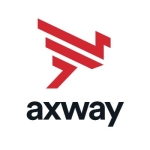What is our primary use case?
We acquired GoAnywhere MFT to help us with our connection to Oracle. We then had a request from our company to put data onto Azure. It was perfect timing. We started creating the connection and the configuration for Azure using GoAnywhere, and we are now exporting close to 2 million transactions per day into Azure. Any activity happening in our core application is being forwarded to the Azure platform, into a data lake.
We have another project in the pipe to connect Hyphen Solutions BuildPro, which is another cloud service, one that helps us in our field of business, which is construction. We are exploring transferring data to BuildPro using GoAnywhere, and that is going to be XML, mostly.
How has it helped my organization?
We deployed connectivity with our Oracle CRM to download data, but that was a temporary solution because now we're doing it in real time. After that, we went after another project, which was to put data into Salesforce, which is our new CRM. GoAnywhere helped us incredibly because it was pretty simple, using Cloud Connectors, to define the Salesforce server and to put the data into objects without any major development on our side.
The previous transmission we had with Salesforce was scheduled to run every two hours. That was the most we could get. Right now it is taking seconds to get there. Not only are we saving time, but the data is immediately useful to the business. Previously, in some cases, it was delaying a purchase of a house by our customers. For example, sometimes a customer wants to put in a particular flooring or a particular kitchen. If those options were not available, they couldn't complete the purchase. But now, with GoAnywhere, they have the information right there. They can complete it right away.
GoAnywhere helps us to distribute data. We are on the iSeries platform, using JDEdwards and Db2. But because our business is now distributed into cloud applications, such as Salesforce and Azure and Google, we help ops to export the data into those platforms.
The Cloud Connectors are amazing and have saved us a lot of time because we don't have to do any programming. It just puts the data there. We haven't been able to 100 percent eliminate custom programs or scripts, but it has helped save a lot of lines of code. That is immensely important, not only because of the coding issue, but also because of security. If you need authentication or key information, it's better to have it encrypted in GoAnywhere, than having this information in the source program, because anybody can see the source and see the authentication information. GoAnywhere handles that more securely.
The other day we needed to export data into SharePoint. We had not done that before, so we needed some examples. We went to the internet but we couldn't find much information. So we contacted HelpSystems and they gave us a link. We then called our SharePoint administrator and he gave us the information we needed and we can now put data into SharePoint.
Previously, that SharePoint process was manual, one where the user had to run some services every two hours. Now that we have automated it, he doesn't have to do it anymore. It has saved a lot of time.
GoAnywhere has also helped us to allocate staff to other work. By using GoAnywhere, we don't need people or a programmer involved in managing security or server configuration anymore. We set them up in GoAnywhere. I'm the one doing the administration for the tool and I just defined the resource so the developer doesn't need to ask questions like,
"How do I connect? What is the password and the user ID?" As soon as I give the guidelines, that this is the resource, we just create a Project and that's all.
What is most valuable?
Transactions transfer in close to real time. Sometimes it takes a little bit of time because of the volume that we have, but the transactions transfer in seconds to the external platform.
When it comes to workflows we use the Projects and the scheduler. We don't have Monitors or many Triggers at the moment. The Projects are the bread and butter of this application; they are the way you put data into the different platforms. Projects are very straightforward and we can create them pretty fast. We define the resource, which could be SharePoint or Azure or Google or any of those API servers. We then create Projects. We put those into production and after that we see the data flowing. The way we did it for Azure, for instance, which is our biggest one, was that every time a user press Enter on the screen, meaning the user is creating a community or home site, that information is captured through a Trigger. Once we get the information into our program, we call the Project workflow in GoAnywhere and it is the middleware that puts the data into the target server, in this case, Azure. It takes microseconds to complete.
For how long have I used the solution?
I have been using HelpSystems GoAnywhere MFT for about four years.
What do I think about the stability of the solution?
If you define the tool correctly and you give it the appropriate memory and priorities, it works perfectly.
What do I think about the scalability of the solution?
We are a little concerned because the maximum number of open connections allowed is 200, and we are pretty much maxed out. I don't know if they will expand that in the future.
We are extensively using GoAnywhere and we're planning to keep it. To give you an idea, sometimes we have 2.7 million transactions per day, exported from our JDE core to other platforms. And I'm constantly looking for problems to which GoAnywhere can be a solution.
Because of the volume of transactions we have per day, I sometimes get a little concerned that we may run into a scenario where the tool will fall behind our needs. The server where GoAnywhere is installed is a powerful machine, it is the latest iSeries. But it's still 2.7 million transactions or packages to deliver, and that is a lot. Maybe if they expanded the number of open connections allowed, we would be better off.
I'm afraid that when we get the new integration with BuildPro, we may fall behind. We may not be delivering the data as fast as we are now. One of the files we produce, the purchase order, is very dynamic. It's close to 600,000 transactions per day. If the business requires us to send some other table that is as dynamic as that one, we may fall behind. As it is now, the purchase order is sometimes delivered hours after its completion. We don't mind because we don't have a separate application waiting for its data in real time, like we have for Salesforce and SharePoint. But in the future, if the business requires something as big as that, we may not be able to deliver it in GoAnywhere.
How are customer service and support?
The support from them has been amazing. They're always on top of things. We call whenever we need something, and if it's urgent we go through the manager and they immediately reply to us. We have had conference calls with their developers, the most knowledgeable ones, and they are always top-notch. We have no complaints about that.
We do wish they had more centralized documentation, because sometimes it's difficult to obtain it, but eventually we get it. We contact our sales manager and that person helps us to obtain the information from the technical people.
The same type of thing is happening now for Box. We run some processes that create PDF reports and those reports are going to specific users in Box. We are working on that now. We're waiting for information from GoAnywhere on that.
Which solution did I use previously and why did I switch?
We were using another solution, from our iSeries platform, to connect with external applications such as Oracle CRM. We started having problems with that because of the Java version and we didn't have any help whatsoever or any support because it was a freebie we downloaded from the internet.
I knew GoAnywhere from my previous company and I recommended it to my supervisor. I told him it would help us with the connection to Oracle. So we acquired the tool and explored it.
How was the initial setup?
The initial setup was a little complex, not because the tool was complex, but because we didn't have experience doing it.
The user interface of GoAnywhere is pretty straightforward. We took the 12-hour training course but still, sometimes we need to obtain more information. We go to their website and try to get samples. Their communication is outstanding. Whenever we request some examples, "How do we do this?" they reply immediately to us.
There is some maintenance from time to time when there are upgrades, as well as whenever we have an encryption key that needs to be applied. Also, every other week we shut down the application to release memory and to start fresh.
The other day we had to upgrade GoAnywhere and the problem we had was that we had moved our location from Miami to Las Vegas. It was tough because when we started testing GoAnywhere we defined certain settings. We tuned the application. When we moved and we had to reinstall GoAnywhere, we forgot that we were using 12 gigabits of memory. We forgot to do the Java 64-bit. We forgot the priorities of the jobs that were defined. We needed to do the job queue tuning and the class. There were a lot of details that we had forgotten. So we had problem after problem. Hopefully, we will not be moving again anytime soon.
For the Las Vegas move, it took us a couple of hours to install the application. That part was easy. Because we had the resources and the workflows defined in the old server, we just downloaded those via XML and uploaded them to the new server. It was pretty straightforward, except for the things that we forgot. But the installation of the application took two hours, maximum.
What was our ROI?
We have definitely seen a good return on investment from going with GoAnywhere. We have even found it inexpensive, to be honest.
To have a solution like this for the price we're paying makes it cheap. Considering the time that it has saved us, and considering the development that we don't need to do, such as connectors and handling servers, the price is really affordable.
Which other solutions did I evaluate?
I vouched for GoAnywhere because I had used it where I was working before. We did some research and we got some documentation, as well as information people had written about MFT solutions, and GoAnywhere was at the top. The business side of our company is satisfied that we're doing what needs to be done.
What other advice do I have?
This is the best solution you can get. Do some research, and if you're totally unbiased, you're going to find that GoAnywhere is definitely what you need.
They've been creating Cloud Connectors, according to industry developments. Whenever there's a new cloud service, they create a Cloud Connector. We're using three of them: Box, SharePoint, and Salesforce.
We are trying to replace Robo-FTP, but the information that we're transferring there is critical, it is treasury data for banking, and the business has not yet decided to use GoAnywhere for that. But that was the original plan. We did have some SSH servers to land the data using FTP and that is no longer required because we can put the data directly into Salesforce.
With the tool itself, so far so good. Everything that we needed to do has been done with GoAnywhere. We haven't found anything where we have had to say, "Oh, that's not possible with GoAnywhere." We're good with the product.
Which deployment model are you using for this solution?
On-premises
Disclosure: PeerSpot contacted the reviewer to collect the review and to validate authenticity. The reviewer was referred by the vendor, but the review is not subject to editing or approval by the vendor.
















